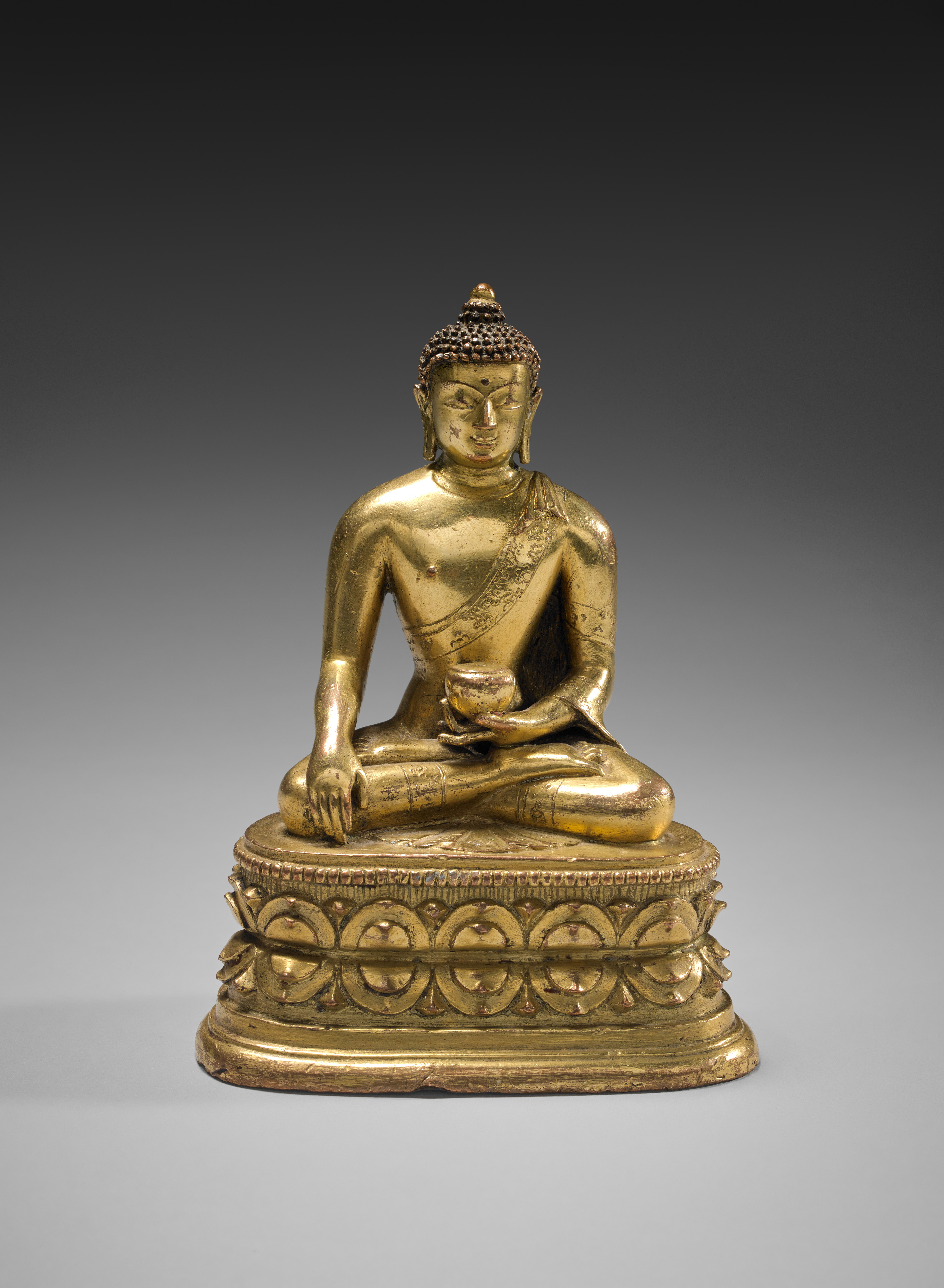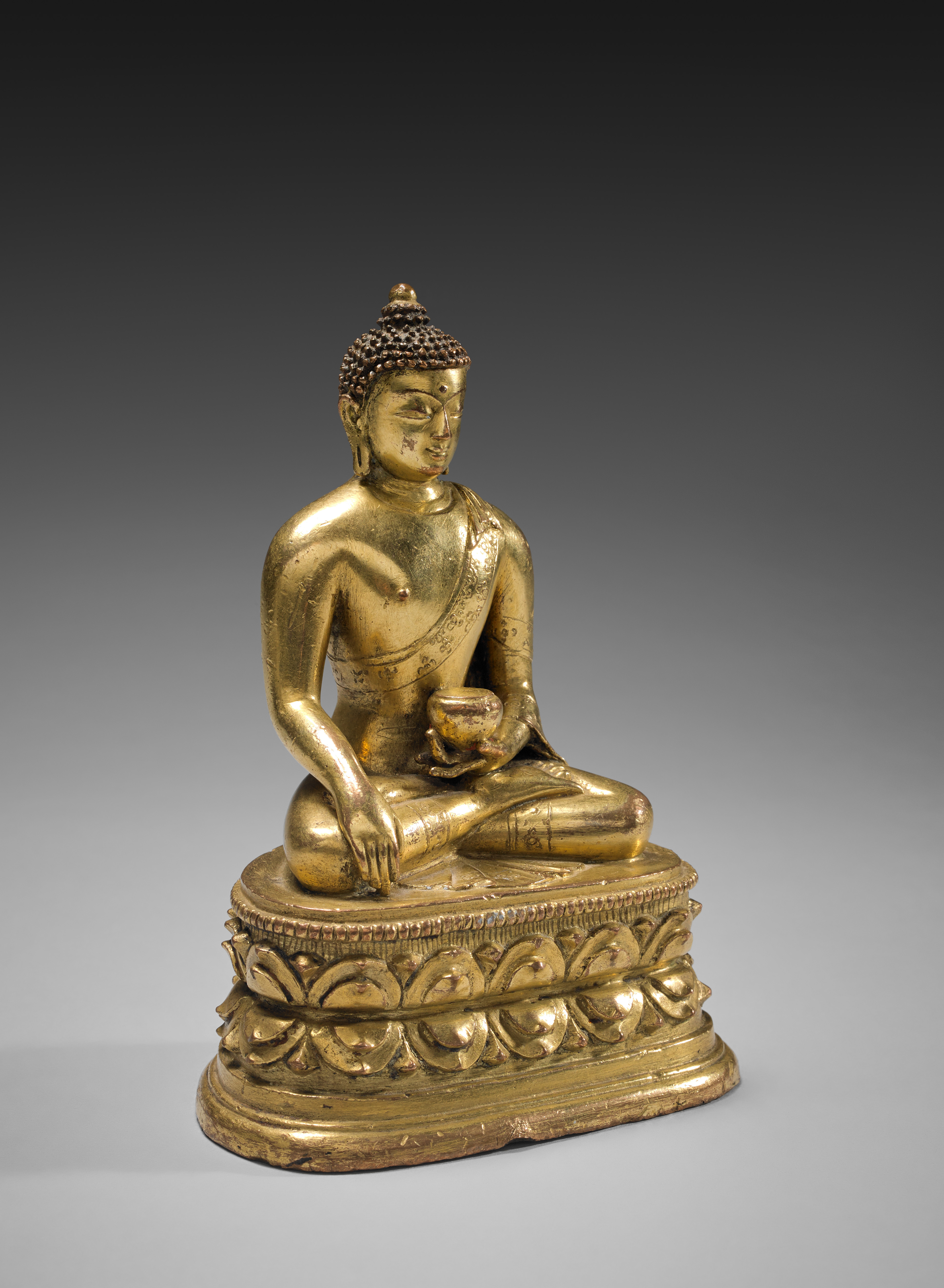Śākyamuni Buddha
110 000,00€
Gilded bronze
Mongolia or Chinese province of Hebei
Early 18th century
H. 13,2 cm or 5 ¼ in
Description
The Buddha is shown here in the most classic iconography. Sitting in the diamond pose, the Blessed One, with his right hand claims the earth as witness (bhumisparsa mudra), in the famous episode just before his Awakening. With his left hand he holds the begging bowl in his lap. Like many depictions in Asia, his top garment (uttarasanga) leaves the right shoulder bare to ensure greater freedom of movement.
The iconometric canon accentuating the width of the shoulders, the very high base with alternating molding and two large rows of flat, undecorated lotus petals, the relatively heavy alloy containing a high amount of copper, and the mercury gilding which covers thickly, all these indicate the statuette was made in the workshop of Zanabazar (1635-1723).
This pontiff, the first of the incarnations at the head of the Mongolian lamaic church (Jebtsundamba-khutukhtu), is known by the honorific title of Jnana Vajra, “Vajra of Wisdom” (transformed into “Zanabazar”) granted to him at the age of three, the first of a long list of praising names acquired throughout his ecclesiastic career. A well-rounded man, there were few activities he didn’t practice. A reputed artist, his sculptures were famous and praised during his lifetime. A small number of bronzes conserved in Ulan Bator form the nucleus of a collection of his works, in spite of the massive destruction carried out by the Communist government during the 1930’s. We have no trace of how his workshops operated either in Mongolia or in Beijing, where, as a close friend of the Emperor Kangxi (reigned 1672-1722), the pontiff spent much of the last thirty years of his life. It is assumed that this latter production continued for a few decades after his death, perpetuating his refined, ancient aesthetics.
This statuette is probably linked to the Beijing workshop. The most famous pieces conserved in Ulan Bator have small refined details, such as the delicate modulations in the lotus petals on the base or the small, flat fold of clothing on the shoulder (Béguin-Dashbaldan, 1993, pp. 148-151, No. 15 and 16). It is, however, stylistically very similar to the bronzes present in 2004 on the London market, with which it shares great balance and physical perfection (Rossi-Rossi, No. 2, 3 and 4).
Provenance: Private collection, Switzerland.
- Béguin, Gilles-Dashbaldan Dorjin, Trésors de Mongolie. Paris : RMN, 1993.
- Rossi, Anna-Maria-Rossi, Fabio, Treasures from Mongolia. Buddhist Sculpture from the School of Zanabazar,. Londres, 2004.






